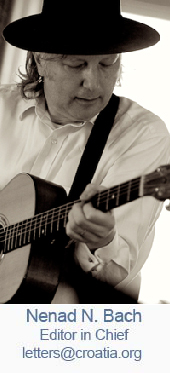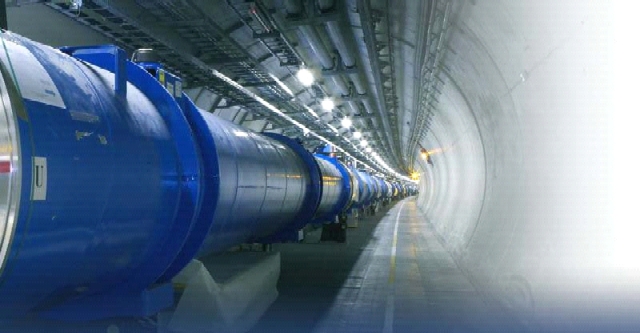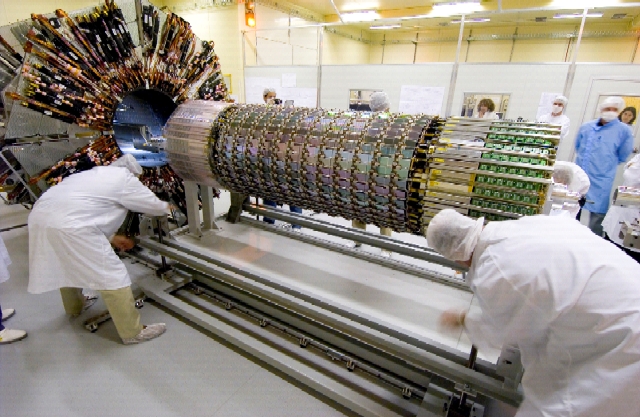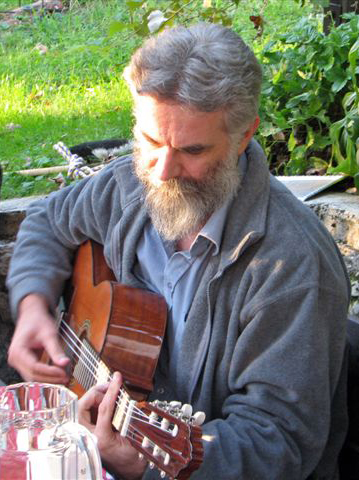
Sponsored Ads
|
» Home
» Science » Erik Margan praised on EN-Genius Network. Why we break the protons?
» Home
» Published Articles » Erik Margan praised on EN-Genius Network. Why we break the protons?
| Erik Margan praised on EN-Genius Network. Why we break the protons? |
| By Nenad N. Bach |
Published
01/14/2009
|
Science , Published Articles
|
Unrated
|
|
|
|
Thinking, predicting, comparing and drawing conclusions.
 Electronics for High Energy Particle Detectors Electronics for High Energy Particle Detectors
You can't make an omelet without breaking the eggs. Likewise, you can't pretend to know a thing or two about Life, the Universe, and Everything, without breaking a few of its constituent parts. Like a child breaking his new toy, driven by a sheer desire to see what's inside, the physicists at CERN will break the protons to see what will show up. The only difference is that the physicists have been doing this all along the timeline in a very controlled manner: first watch the nature doing it; then think, and make models and explanations, and make predictions based on those models; then try to repeat it in better controlled circumstances; finally, analyze the result and compare it with the predictions, and draw conclusions. Now repeat everything to confirm.
Thinking, predicting, comparing and drawing conclusions are extremely important scientific processes. Those must be done with rigor and honesty. Confirming is vital, since without being able to repeat and confirm, you're not doing science. But acquiring raw data is the key that enables everything. This requires robust, trustworthy and precise equipment, which in case of the Large Hadron Collider (LHC) could only vaguely be imagined back in the mid 1980s, when the necessity for it was recognized and the theoretical requirements for it were set. The ability to predict, not just the outcome of a relatively simple model experiment, but also the future complex technological developments necessary to realize the experiment in practice, was a remarkable demonstration of sound planning.
Here you can find the Part I of a two-part short review of some of the data acquisition equipment of the LHC and the ATLAS experiment, with the emphasis on electronics:
http://www.en-genius.net/site/zones/acquisitionZONE/technical_notes/acqt_010509
| 
My friend Nenad Bach has already built me a monument on these web pages, but now my friend Dennis Feucht, a retired Tektronix engineer and the author of the very successful Analog Circuit Design book, has apparently done it again on the web pages of EN-Genius Network, where he is one of the editors and a major contributor. Many thanks to both Nenad and Dennis. I hope that you will enjoy the reading, even if not being an expert in electronics.
In September 2008 the world turned its attention to the spectacular start of the LHC and the first circulation beam of particles. But as Edsel Murphy would have it, in spite of all the meticulous testing and retesting over the years, a disaster stroke only nine days later, as one of the 154 superconducting magnets in the accelerator's section 3-4 disrupted the normal current ramp-up, apparently owed to a faulty connection between two magnets, leading to a puncture of the helium cryostat insulation vacuum and a consequent vacuum degradation both in the cryostat insulation and in the beam pipes. A summary report is available here:
http://cdsweb.cern.ch/record/1135729/files/LHC_incident_080919_eng.pdf
| 
Because of that, the whole section 3-4 had to be slowly warmed up from the operating 1.9K (-271°C) to room temperature, the connections between the magnets opened and the damage assessed and repaired. During the winter, the operation of the LHC would have been shut down anyway, because of the higher cost of electricity, so the decision was made to postpone the restart to the summer of 2009 and take some 66 magnets up to the ground level for cleanup and repair. In the meantime, the detectors remained in operation, being tested by detecting high energy cosmic particles to verify the natural radiation background and ensuring to be ready for the restart.
Erik Margan,
Experimental Particle Physics Department,
“Jožef Stefan” Institute,
Ljubljana, Slovenia
|  Erik Margan plays, not just with particles.
Op-ed:
ATLAS is a particle physics experiment at the Large Hadron Collider at CERN. Starting in Spring 2009, the ATLAS detector will search for new discoveries in the head-on collisions of protons of extraordinarily high energy. ATLAS will learn about the basic forces that have shaped our universe since the beginning of time and that will determine its fate. Among the possible unknowns are the origin of mass, extra dimensions of space, microscopic black holes, and evidence for dark matter candidates in the universe.
Who are the 2500 physicists in ATLAS?
ATLAS is a virtual United Nations of 37 countries. In this troubled world, it is inspiring to see people from many lands working together in harmony. International collaboration has been essential to this success. These physicists come from more than 169 universities and laboratories and include 700 students. ATLAS is one of the largest collaborative efforts ever attempted in the physical sciences.
http://www.atlas.ch
|
Formated for CROWN by Nenad N. Bach Distributed by www.Croatia.org . This message is intended for Croatian Associations/Institutions and their Friends in Croatia and in the World. The opinions/articles expressed on this list do not reflect personal opinions of the moderator. If the reader of this message is not the intended recipient, please delete or destroy all copies of this communication and please, let us know!...or simply enjoy.
|
Related Articles
Related Links
|
|